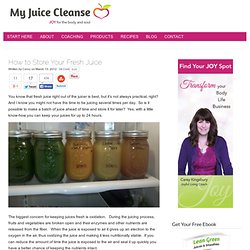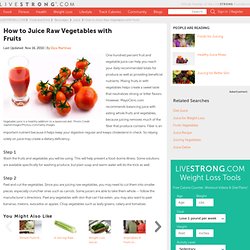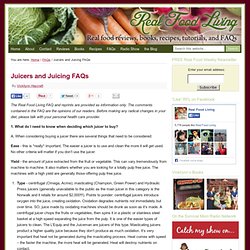

Best pitcher for fresh juice. Nalgene Wide Mouth Loop-Top 32 oz. Bottle BPA Free, 80900. BEST glass pitchers with lids. Frigoverre makes hands down the BEST glass pitchers with lids.

I refuse to store my homemade almond milk and fresh juices in nasty plastic pitchers. I also won’t risk leaving them open and uncovered in my lidless glass pitchers. So, I’ve tried more than my fair share of glass pitchers with lids. Some are too thin and break at the slightest tap when you clean them. Some have useless lids that don’t keep other scents out or the liquid in when you shake it. Here is the scoop. The One liter pitcher is ideal for small batches of fresh juice. The two liter pitcher works well for a big batch of tea, lemonade or juice. Nalgene containers with airtight lids. How to Store Fresh Juice. You know that fresh juice right out of the juicer is best, but it’s not always practical, right?

And I know you might not have the time to be juicing several times per day. So is it possible to make a batch of juice ahead of time and store it for later? Yes, with a little know-how you can keep your juices for up to 24 hours. The biggest concern for keeping juices fresh is oxidation. During the juicing process, fruits and vegetables are broken open and their enzymes and other nutrients are released from the fiber.
Juicing in Bulk One of our readers, Kelly, has been kind enough to share her method and photos of how she stores her bulk juices. You’ll need a few 16 oz. mason jars, a sharpie marker, enough fruits and vegetables to make a day’s worth of juice and some recipes to follow. Make your first juice recipe and then: 1. 2. 3. 4. Extra Tips from Carey: * add 1/2 to 1 lemon to your juice recipe. . * Rinse your juicer (at least the basket) between recipes to keep the flavors separate. Juicing instructions. Juicing Instructions.
One hundred percent fruit and vegetable juice can help you reach your daily recommended totals for produce as well as providing beneficial nutrients.

Mixing fruits in with vegetables helps create a sweet taste that neutralizes strong or bitter flavors. However, MayoClinic.com recommends balancing juice with eating whole fruits and vegetables, because juicing removes much of the fiber that produce contains. Fiber is an important nutrient because it helps keep your digestion regular and keeps cholesterol in check. So relying solely on juice may create a dietary deficiency. Wash the fruits and vegetables you will be using. Peel and cut the vegetables. Put your fruits and vegetables into the juicer or blender, and follow the product's directions about which buttons to push and what speed to use.
Try a variety of fruit and vegetable mixtures. Clean your juicer or blender immediately after use. Peel apples before juicing. Juicers and Juicing FAQs. The Real Food Living FAQ and reprints are provided as information only.

The comments contained in the FAQ are the opinions of our readers. Before making any radical changes in your diet, please talk with your personal health care provider. 1. What do I need to know when deciding which juicer to buy? A. Ease - this is *really* important. Yield - the amount of juice extracted from the fruit or vegetable. Type - centrifugal (Omega, Acme); masticating (Champion, Green Power) and Hydraulic Press juicers (generally unavailable to the public as the main juicer in this category is the Norwalk and it retails for around $2,000!!!). 2. A. ” I tried the Acme but found it difficult to clean and unable to handle large quantities of juicing at one time. ” An Acme juicer will do in a pinch, but a Champion gets more vitamins out of the carrots. ” I use a Vita-Mix ONLY as a blender and not as a juicer. ” I *love* the Champion!